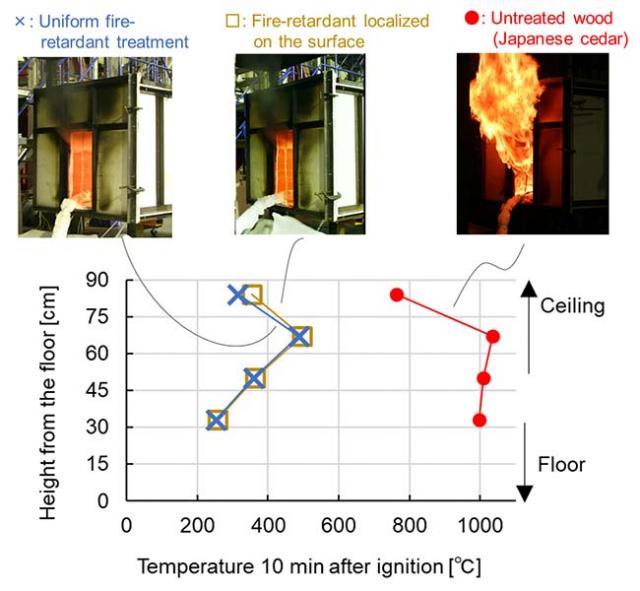Home > Research > Research Results > Research Results 2019 > Uneven distribution of chemicals during the use of fire-retardant-treated wood has no impact on fire performance
Update:October 4, 2019
Main content starts here.
Uneven distribution of chemicals during the use of fire-retardant-treated wood has no impact on fire performance
| Article title |
Burning Characteristics of Fire-Retardant-Treated Wood Unevenly Treated |
|---|---|
| Author (affiliation) |
Ryo Takase (a), Daisuke Kamikawa (a), Yuji Hasemi (b), Ken Matsuyama (c) (a) Department of Wood Improvement, FFPRI, Tsukuba, Ibaraki, Japan. (b) Waseda University, Shinjuku-ku, Tokyo, Japan. (c) Tokyo University of Science, Noda, Chiba, Japan. |
| Publication Journal |
Journal of Environmental Engineering (Transactions of AIJ), 84(762), 709-717, 2019 DOI:10.3130/aije.84.709( External link ) |
| Content introduction |
With the increase in the use of wood for public building interiors, fire-retardant-treated wood has been widely used to prevent fire hazards. However, under conditions of high humidity, the fire retardant may migrate to the wood surface, resulting in fewer chemicals within (efflorescence). Because of this efflorescence, there are concerns regarding the extent of flames suppression in the event of a fire. To elucidate the impact of uneven distribution of fire retardant on fire safety, we prepared three groups of specimens and conducted model box tests. A control group was left untreated for comparison, while the other two groups were chemically treated to represent the states of wood before and after efflorescence. The results revealed that there were only minor differences in the performance of the fire retardant-treated materials, while the untreated wood burned down and redundant flames erupted outside the room (see figures). For improved evacuation safety, the prevention of flame spread is of utmost importance. From this study, it can be inferred that fire retardant-treated wood has sufficient fire resistance even after efflorescence, unless exposed to rain or condensation. However, efflorescence leaves a notable difference in surface appearance. This poses a challenge for maintaining the interior aesthetic; hence, measures such as coatings are essential for buildings.
Photo: Flame spread in model box tests Figure: Room temperature 10 min after ignition. Model box tests (a method to assess fire performance using a reduced scale room of 84 cm width, 168 cm length, and 84 cm height) were carried out for three materials with different chemical distributions. In the case of untreated wood, flames violently erupted outside the room, while all of the flame-retardant-treated materials prevented the spread of fire. |
Copyright © Forest Research and Management Organization. All rights reserved.

